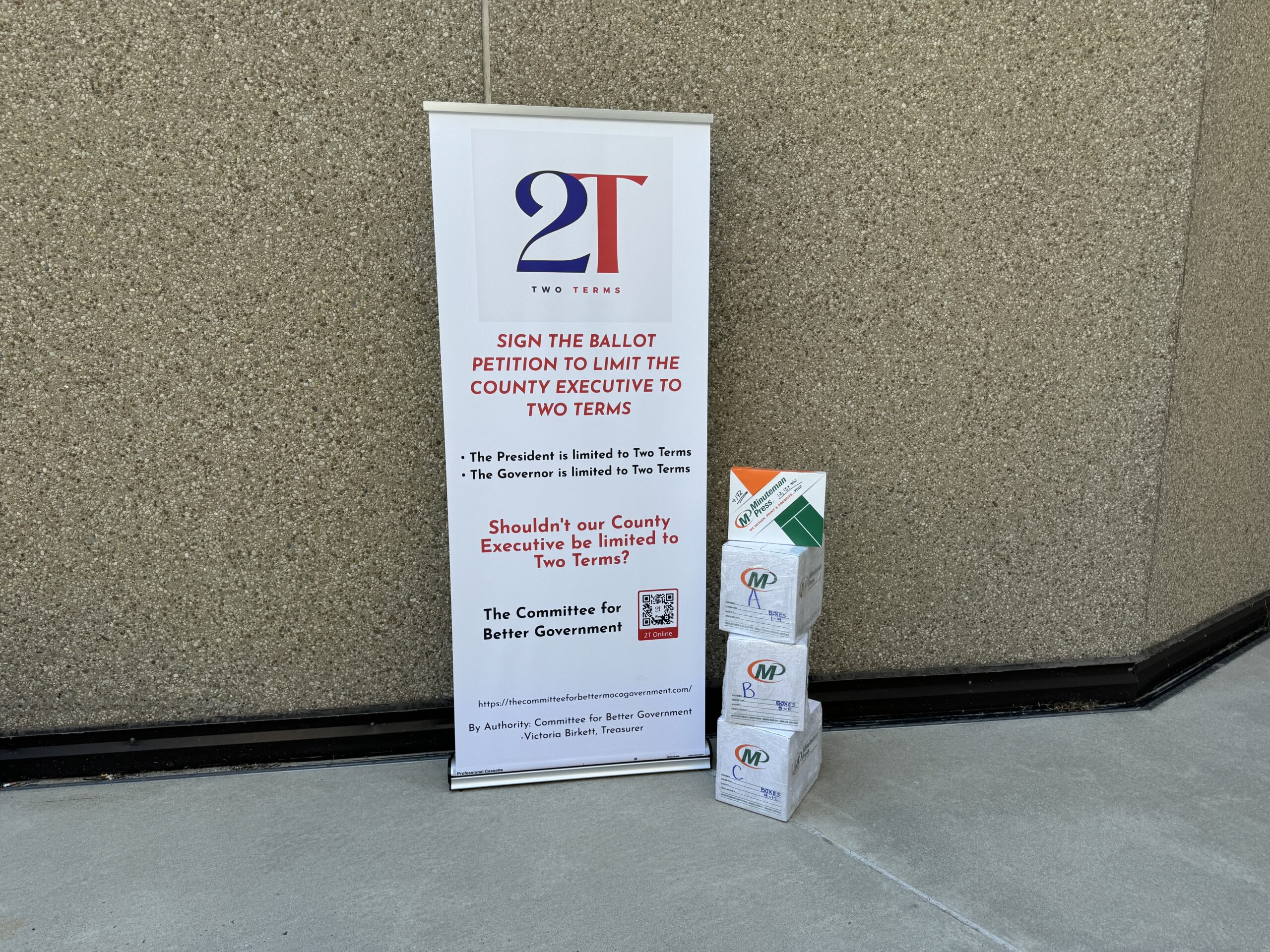By Adam Pagnucco.
Last week, when I revealed that Reardon “Sully” Sullivan’s term limits group had begun submitting ballot signatures to limit the county executive to two terms, most of my source network assumed that his proposal would make the ballot and be passed by voters. The effect of that would be to eject current County Executive Marc Elrich, who is now in his second term, from office. But the story is not over because Elrich can potentially be rescued. The key decision makers? None other than the county council.
First, some background. In 2016, county voters approved a charter amendment limiting the county executive and the county council to three consecutive terms. After a stint out of office, such officials would be allowed to return. Sullivan’s group is gathering signatures for another charter amendment that would limit the executive to two consecutive terms but leave term limits for the council unchanged. Most observers expect that if Sullivan meets the threshold of 10,000 valid signatures from registered voters, his amendment will be passed in November. (The 2016 term limits amendment was approved with 70% of the vote.)
However, nothing is ever certain with ballot questions and that goes double for charter amendments. The county’s charter – essentially, its constitution – can only be amended by general election voters. And charter amendments can only be placed on the ballot through the gathering of at least 10,000 valid voter signatures OR by action of the county council. The council has placed charter amendments on the ballot many times in the past, for purposes both great and small.
For example, in 2020, two charter amendments were placed on the ballot through voter signature drives: one limiting property tax increases and another changing the council’s structure so that all members would be elected from a district. (Up to that point, four members were elected at-large and five came from districts.) The council placed two charter amendments on the ballot as alternatives – one specifying a different methodology for the county’s charter limit on property taxes and a second adding two district council members and keeping the four members elected at large. Ultimately, the two council-placed amendments passed and the two voter-placed amendments failed.

Sullivan’s first batch of term limits signatures.
Sec. 509 of the county’s charter provides for a charter review commission. The commission, which is composed of 11 members, no more than 6 from the same political party, has members appointed by both the executive and the council. The commission’s term lasts for four years and it is supposed to issue recommendations to the council through reports in even-numbered years. The council is not obligated to place any of the commission’s recommendations on the ballot, but its reports at least ensure that there is regular discussion of whether the charter should be updated.
This year, the charter review commission weighed in on term limits. In a memo to the council dated June 13, the commission expressed its opposition to Sullivan’s charter amendment reducing the executive’s limit from three to two consecutive terms. The commission wrote:
The bipartisan, ten-member Commission was unanimous in finding that the petitioner’s proposal, which seeks to prevent the sitting County Executive from serving a third term, is unnecessary. Some Commission members do not oppose term limits but believe that the existing three-term limit is adequate and find no reason to change it. Other Commission members oppose term limits generally because they restrict voters’ ability to choose who represents them. They believe term limits are unnecessary because voters already have the power to replace officials through the electoral process if the voters believe the official has served too long or if they are dissatisfied with an official’s performance.
The commission then proposed an alternative: that the executive be limited to three terms over a lifetime. The commission wrote:
Some Commission members question whether the voters who approved the three-term limit in 2016 believed that “three meant three” in total and they wonder whether voters contemplated that an official might serve four terms or five terms provided that only three of them were served consecutively. A majority of the Commission believes that an alternative proposal should be put on the ballot to allow voters to decide this question directly. Accordingly, the Commission voted 6 to 2 in favor of recommending that a question be placed on the ballot in 2024, asking voters to approve a Charter amendment allowing a County Executive to serve three consecutive terms but allowing an individual to serve only three terms in total, whether or not they are served consecutively (either would be permissible).
The effect of such a charter amendment, if passed, would be to allow Elrich to serve for one more term.
What happens if both Sullivan’s amendment and the commission’s amendment are placed on the ballot and both are passed? That’s hard to say. In 2002, Maryland Attorney General Joe Curran issued an opinion stating his belief that if multiple conflicting charter amendments were passed and could not be reconciled, then all would fail. But this opinion is not binding and the issue has not been tested in Maryland courts. The council has had opportunities in the past to consider a charter amendment specifying what would happen if such an outcome were to occur but has never acted on it. So this is essentially a legal no-man’s land.

Sullivan gathers term limits signatures at last year’s agricultural fair.
It’s noteworthy that the commission’s report, dated April 24, does not address Sullivan’s proposal but it is instead addressed in a separate memo from the commission dated June 13. Sec. 509 of the charter states: “Commission reports shall be submitted not later than May 1 of every even-numbered year.” Accordingly, I question whether the commission’s alternative is properly before the council based on the charter’s plain language.
Nevertheless, the council has broad discretion to place charter amendments on the ballot and has used it in the past. Would the council try to rescue Elrich? I am hesitant to predict what it will do. Elrich is unloved in the council building. He has a long record of intemperate statements and antagonistic relationships with other elected officials. (Some of the council members still remember when he called them “fact proof” during the pandemic.) To my knowledge, no council member believes he is doing a great job and I bet all of them believe they would make a better executive than Elrich.
And that latter point is key. In deciding how to handle this issue, each council member will consider his or her own self-interest. Some of these council members will run for executive in two years if Elrich is removed from office. However, under Sullivan’s amendment, they would only get two consecutive terms. Would these council members be better off if the commission’s amendment passes, thereby providing three lifetime terms, or if the two amendments knock each other out and leave the current limit of three consecutive terms in place? Is it worth possibly waiting six years to run if Elrich returns? That’s a lot to ponder – and let’s remember that politicians endlessly ponder their own political fates.
In any event, Sullivan’s amendment is not on the ballot… yet. The council will consider possible ballot amendments and – crucially – their specific language by early August. We will find out if an Elrich rescue attempt is made by then.
